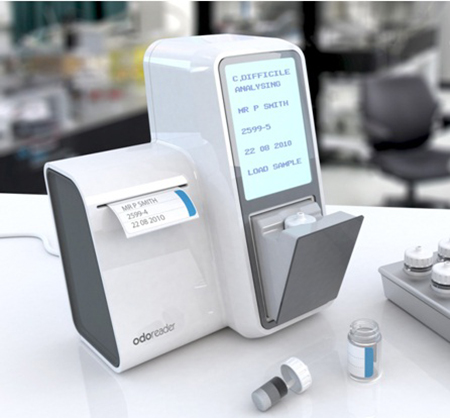By Kalwinder KaurJul 9 2013
Cancer is the leading cause of disease worldwide. Research in the fight against cancer continues and new windows of opportunity to help catch cancer at the earliest possible stage are closer than ever before with a new urine odour test currently being tested for the detection of bladder cancer.
Based on data by the World Health Organisation, an estimated 12.7 million new cases of cancer were diagnosed in 2008. Statistics by Cancer Research UK state that in 2010, 10,324 people based in the UK were diagnosed with bladder cancer.
Cancer Research UK also reported latest age-standardized survival rates for bladder cancer in England (2005-2009 with 78% of male sufferers to survive the illness for an estimated one year, but this survival rate rapidly declines to 58.2% for those diagnosed and surviving the disease over a five year period).
One of the tests to help diagnose bladder cancer is cystoscopy, a procedure that involves inserting a thin tube with a light inside the bladder. Testing procedures such as this are invasive and uncomfortable for the patient and this is encouraging researchers to develop less painful, non-invasive technology that is just as accurate and reliable as the gold standard methods of detection for bladder cancer.
Professor Chris Probert, from the University of Liverpool, and Professor Norman Ratcliffe, from the University of the West of England have developed a new sensor designed to identify gaseous chemicals that are released in the presence of cancer cells.
The odours are detected from urine sample for the early detection of bladder cancer. The device is called ODOREADER® and it works by taking a urine sample from a patient and provides a clear reading of diagnosis after a waiting period of just 30 minutes.
Due to the lack of early screening methods, this technology gives new hope for early detection and better treatment for bladder cancer sufferers. The volatiles that are given off from heating the urine sample become key to allowing this gas sensor to detect presence of suspect molecules that are given off in the presence of cancer cells.

ODOREADER® - device with a sensor to detect gases in urine. Image credits: University of Liverpool.
To understand how this new sensor may work, it is important to grasp the basic function to a standard electronic nose sensor device. With a standard electronic nose system, the odor molecules become suspended in a chamber within the sensor unit.
In a normal e-nose system, there are various sampling techniques including headspace sampling and diffusion methods to carry the odor across the sensor array. Changes in the sensing material impact changes in electrical conductivity (imagine a receptor on a human cell that changes its conformation in response to a receptor molecule). Therefore, different odors in a detector will generate different readings based on changes in conductivity.
ODOREADER® technology has also been designed to detect Clostridium difficile by detecting the odor from stool samples to diagnose diarrhea. Being able to use this technology that can analyze and diagnose diarrhea from a sample of faeces in under an hour makes this system a great benefit on a global scale to help the prevention of disease.
For the early detection of gastro-intestinal diseases, this new technology could reduce morbidity and mortality rates which in response would help lower health costs.
This technology is still in its early stages and with current finding from a recent trial, which used urine samples from 98 participants (24 men diagnosed with bladder cancer and 74 men with bladder-related symptoms but not diagnosed with bladder cancer), this system needs to be tested on wider sample groups including women.
At present this technology is not being used in hospitals, but if it does prove to show compelling accuracy rates then it will most certainly be a key player in becoming a standard screening method for the detection of bladder cancer.
In a quote by Prof Probert who stated that the findings were promising: "We now need to look at larger samples of patients to test the device further before it can be used in hospitals."
As stated, further development of ODOREADER® is crucial before it can be rolled out into a hospital setting. With bladder cancer being targeted with this sensor, it opens doors to the possibility of, one day, such detection technology being applied to test for other forms of cancer.
Reference
Disclaimer: The views expressed here are those of the author expressed in their private capacity and do not necessarily represent the views of AZoM.com Limited T/A AZoNetwork the owner and operator of this website. This disclaimer forms part of the Terms and conditions of use of this website.